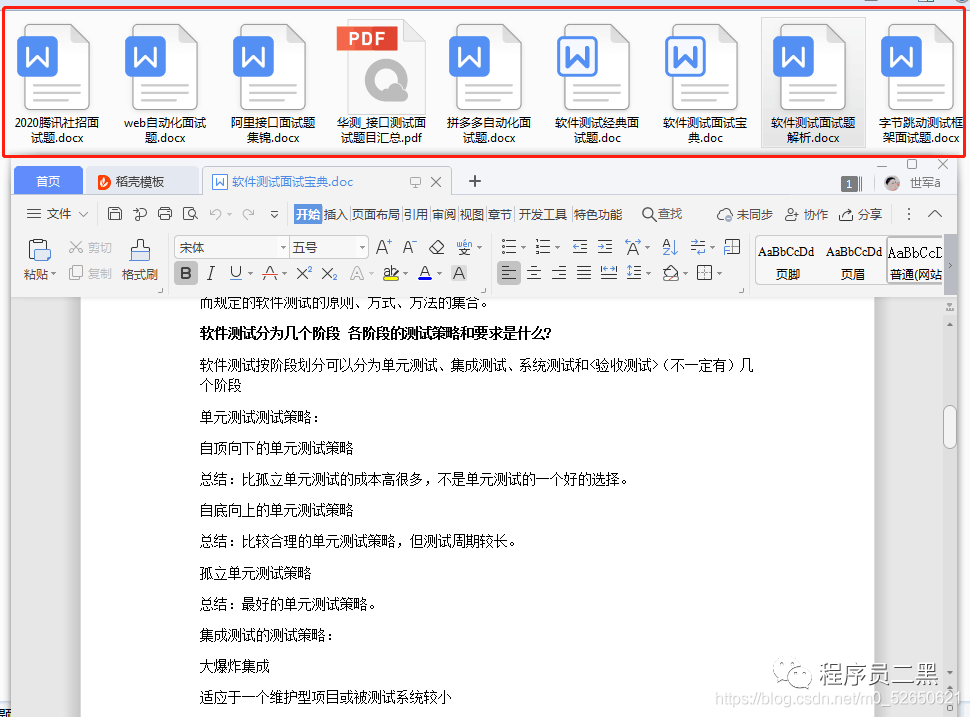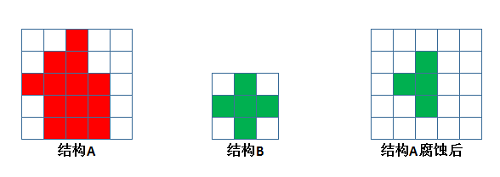我需要检查,如果用户位置属于MKCoordinateRegion。 我很惊讶,没有找到这个简单的功能, 像:CGRectContainsCGPoint(RECT,点)。
我发现下面的代码:
CLLocationCoordinate2D topLeftCoordinate =
CLLocationCoordinate2DMake(region.center.latitude
+ (region.span.latitudeDelta/2.0),
region.center.longitude
- (region.span.longitudeDelta/2.0));
CLLocationCoordinate2D bottomRightCoordinate =
CLLocationCoordinate2DMake(region.center.latitude
- (region.span.latitudeDelta/2.0),
region.center.longitude
+ (region.span.longitudeDelta/2.0));
if (location.latitude < topLeftCoordinate.latitude || location.latitude > bottomRightCoordinate.latitude || location.longitude < bottomRightCoordinate.longitude || location.longitude > bottomRightCoordinate.longitude) {
// Coordinate fits into the region
}
但是,我不知道这是否是准确的,因为文件没有指定区域的矩形究竟是如何计算的。
必须有做简单的方法。 难道我忽略了MapKit框架文档中的某些功能?
Answer 1:
如果有任何人与纬度和longitues别人混淆,这里进行了测试,工作液:
MKCoordinateRegion region = self.mapView.region;
CLLocationCoordinate2D location = user.gpsposition.coordinate;
CLLocationCoordinate2D center = region.center;
CLLocationCoordinate2D northWestCorner, southEastCorner;
northWestCorner.latitude = center.latitude - (region.span.latitudeDelta / 2.0);
northWestCorner.longitude = center.longitude - (region.span.longitudeDelta / 2.0);
southEastCorner.latitude = center.latitude + (region.span.latitudeDelta / 2.0);
southEastCorner.longitude = center.longitude + (region.span.longitudeDelta / 2.0);
if (
location.latitude >= northWestCorner.latitude &&
location.latitude <= southEastCorner.latitude &&
location.longitude >= northWestCorner.longitude &&
location.longitude <= southEastCorner.longitude
)
{
// User location (location) in the region - OK :-)
NSLog(@"Center (%f, %f) span (%f, %f) user: (%f, %f)| IN!", region.center.latitude, region.center.longitude, region.span.latitudeDelta, region.span.longitudeDelta, location.latitude, location.longitude);
}else {
// User location (location) out of the region - NOT ok :-(
NSLog(@"Center (%f, %f) span (%f, %f) user: (%f, %f)| OUT!", region.center.latitude, region.center.longitude, region.span.latitudeDelta, region.span.longitudeDelta, location.latitude, location.longitude);
}
Answer 2:
您可以将您的位置转换成用点MKMapPointForCoordinate ,然后使用MKMapRectContainsPoint上的MapView的visibleMapRect 。 这完全是从我的头顶。 让我知道,如果它的工作原理。
Answer 3:
我张贴这个答案,因为接受的解决方案是不是在我看来有效。 这个答案也并不完美,但是当坐标环绕360度的界限,这足以适用于我的情况它处理的情况。
+ (BOOL)coordinate:(CLLocationCoordinate2D)coord inRegion:(MKCoordinateRegion)region
{
CLLocationCoordinate2D center = region.center;
MKCoordinateSpan span = region.span;
BOOL result = YES;
result &= cos((center.latitude - coord.latitude)*M_PI/180.0) > cos(span.latitudeDelta/2.0*M_PI/180.0);
result &= cos((center.longitude - coord.longitude)*M_PI/180.0) > cos(span.longitudeDelta/2.0*M_PI/180.0);
return result;
}
Answer 4:
其他答案都有缺点。 该接受的答案是有点冗长,但未能通过国际日期变更线附近。 余弦答案是可行的,但对于非常小的区域失败(因为增量余弦为正弦波,其趋向于零接近零,意为更小的角度差异,我们期待零换乘)这个答案应该正常运行于所有情况,而且更简单。
迅速:
/* Standardises and angle to [-180 to 180] degrees */
class func standardAngle(var angle: CLLocationDegrees) -> CLLocationDegrees {
angle %= 360
return angle < -180 ? -360 - angle : angle > 180 ? 360 - 180 : angle
}
/* confirms that a region contains a location */
class func regionContains(region: MKCoordinateRegion, location: CLLocation) -> Bool {
let deltaLat = abs(standardAngle(region.center.latitude - location.coordinate.latitude))
let deltalong = abs(standardAngle(region.center.longitude - location.coordinate.longitude))
return region.span.latitudeDelta >= deltaLat && region.span.longitudeDelta >= deltalong
}
目标C:
/* Standardises and angle to [-180 to 180] degrees */
+ (CLLocationDegrees)standardAngle:(CLLocationDegrees)angle {
angle %= 360
return angle < -180 ? -360 - angle : angle > 180 ? 360 - 180 : angle
}
/* confirms that a region contains a location */
+ (BOOL)region:(MKCoordinateRegion*)region containsLocation:(CLLocation*)location {
CLLocationDegrees deltaLat = fabs(standardAngle(region.center.latitude - location.coordinate.latitude))
CLLocationDegrees deltalong = fabs(standardAngle(region.center.longitude - location.coordinate.longitude))
return region.span.latitudeDelta >= deltaLat && region.span.longitudeDelta >= deltalong
}
这种方法失败了,其中包括两种极虽然区域,但随后的坐标系统本身在两极失败。 对于大多数应用来说,这个解决方案应该足够了。 (注意,在目标C未测试)
Answer 5:
我用这个代码,以确定是否坐标是一个圆形的区域内(与它周围的半径的坐标)。
- (BOOL)location:(CLLocation *)location isNearCoordinate:(CLLocationCoordinate2D)coordinate withRadius:(CLLocationDistance)radius
{
CLCircularRegion *circularRegion = [[CLCircularRegion alloc] initWithCenter:location.coordinate radius:radius identifier:@"radiusCheck"];
return [circularRegion containsCoordinate:coordinate];
}
Answer 6:
欧文戈弗雷,Objective-C的代码doesn't工作,这是很好的代码:对失败的Objective-C,这是很好的代码:
/* Standardises and angle to [-180 to 180] degrees */
- (CLLocationDegrees)standardAngle:(CLLocationDegrees)angle {
angle=fmod(angle,360);
return angle < -180 ? -360 - angle : angle > 180 ? 360 - 180 : angle;
}
-(BOOL)thisRegion:(MKCoordinateRegion)region containsLocation:(CLLocation *)location{
CLLocationDegrees deltaLat =fabs([self standardAngle:(region.center.latitude-location.coordinate.latitude)]);
CLLocationDegrees deltaLong =fabs([self standardAngle:(region.center.longitude-location.coordinate.longitude)]);
return region.span.latitudeDelta >= deltaLat && region.span.longitudeDelta >=deltaLong;
}
CLLocationDegrees deltalong = fabs(standardAngle(region.center.longitude - location.coordinate.longitude));
return region.span.latitudeDelta >= deltaLat && region.span.longitudeDelta >= deltalong;
}
谢谢!
Answer 7:
根据卢卡斯的解决方案,但是在斯威夫特的情况下,任何人都可以利用斯威夫特的:
func isInRegion (region : MKCoordinateRegion, coordinate : CLLocationCoordinate2D) -> Bool {
let center = region.center;
let northWestCorner = CLLocationCoordinate2D(latitude: center.latitude - (region.span.latitudeDelta / 2.0), longitude: center.longitude - (region.span.longitudeDelta / 2.0))
let southEastCorner = CLLocationCoordinate2D(latitude: center.latitude + (region.span.latitudeDelta / 2.0), longitude: center.longitude + (region.span.longitudeDelta / 2.0))
return (
coordinate.latitude >= northWestCorner.latitude &&
coordinate.latitude <= southEastCorner.latitude &&
coordinate.longitude >= northWestCorner.longitude &&
coordinate.longitude <= southEastCorner.longitude
)
}
Answer 8:
我有问题,同样的计算。 我喜欢欧文·戈弗雷提出的概念在这里 ,包子甚至费尔南多在这里错过了纬度比经度diferently包梁和具有diferent范围的事实。 为了澄清我的建议我与测试后,这样你可以通过你的自我检查出来。
import XCTest
import MapKit
// MARK - The Solution
extension CLLocationDegrees {
enum WrapingDimension: Double {
case latitude = 180
case longitude = 360
}
/// Standardises and angle to [-180 to 180] or [-90 to 90] degrees
func wrapped(diemension: WrapingDimension) -> CLLocationDegrees {
let length = diemension.rawValue
let halfLenght = length/2.0
let angle = self.truncatingRemainder(dividingBy: length)
switch diemension {
case .longitude:
// return angle < -180.0 ? 360.0 + angle : angle > 180.0 ? -360.0 + angle : angle
return angle < -halfLenght ? length + angle : angle > halfLenght ? -length + angle : angle
case .latitude:
// return angle < -90.0 ? -180.0 - angle : angle > 90.0 ? 180.0 - angle : angle
return angle < -halfLenght ? -length - angle : angle > halfLenght ? length - angle : angle
}
}
}
extension MKCoordinateRegion {
/// confirms that a region contains a location
func contains(_ coordinate: CLLocationCoordinate2D) -> Bool {
let deltaLat = abs((self.center.latitude - coordinate.latitude).wrapped(diemension: .latitude))
let deltalong = abs((self.center.longitude - coordinate.longitude).wrapped(diemension: .longitude))
return self.span.latitudeDelta/2.0 >= deltaLat && self.span.longitudeDelta/2.0 >= deltalong
}
}
// MARK - Unit tests
class MKCoordinateRegionContaingTests: XCTestCase {
func testRegionContains() {
var region = MKCoordinateRegionMake(CLLocationCoordinate2DMake(0, 0), MKCoordinateSpan(latitudeDelta: 1, longitudeDelta: 1))
var coords = CLLocationCoordinate2DMake(0, 0)
XCTAssert(region.contains(coords))
coords = CLLocationCoordinate2DMake(0.5, 0.5)
XCTAssert(region.contains(coords))
coords = CLLocationCoordinate2DMake(-0.5, 0.5)
XCTAssert(region.contains(coords))
coords = CLLocationCoordinate2DMake(0.5, 0.5000001)
XCTAssert(!region.contains(coords)) // NOT Contains
coords = CLLocationCoordinate2DMake(0.5, -0.5000001)
XCTAssert(!region.contains(coords)) // NOT Contains
coords = CLLocationCoordinate2DMake(1, 1)
XCTAssert(!region.contains(coords)) // NOT Contains
region = MKCoordinateRegionMake(CLLocationCoordinate2DMake(0, 180), MKCoordinateSpan(latitudeDelta: 1, longitudeDelta: 1))
coords = CLLocationCoordinate2DMake(0, 180.5)
XCTAssert(region.contains(coords))
coords.longitude = 179.5
XCTAssert(region.contains(coords))
coords.longitude = 180.5000001
XCTAssert(!region.contains(coords)) // NOT Contains
coords.longitude = 179.5000001
XCTAssert(region.contains(coords))
coords.longitude = 179.4999999
XCTAssert(!region.contains(coords)) // NOT Contains
region = MKCoordinateRegionMake(CLLocationCoordinate2DMake(90, -180), MKCoordinateSpan(latitudeDelta: 1, longitudeDelta: 1))
coords = CLLocationCoordinate2DMake(90.5, -180.5)
XCTAssert(region.contains(coords))
coords = CLLocationCoordinate2DMake(89.5, -180.5)
XCTAssert(region.contains(coords))
coords = CLLocationCoordinate2DMake(90.50000001, -180.5)
XCTAssert(!region.contains(coords)) // NOT Contains
coords = CLLocationCoordinate2DMake(89.50000001, -180.5)
XCTAssert(region.contains(coords))
coords = CLLocationCoordinate2DMake(89.49999999, -180.5)
XCTAssert(!region.contains(coords)) // NOT Contains
}
func testStandardAngle() {
var angle = 180.5.wrapped(diemension: .longitude)
var required = -179.5
XCTAssert(self.areAngleEqual(angle, required))
angle = 360.5.wrapped(diemension: .longitude)
required = 0.5
XCTAssert(self.areAngleEqual(angle, required))
angle = 359.5.wrapped(diemension: .longitude)
required = -0.5
XCTAssert(self.areAngleEqual(angle, required))
angle = 179.5.wrapped(diemension: .longitude)
required = 179.5
XCTAssert(self.areAngleEqual(angle, required))
angle = 90.5.wrapped(diemension: .latitude)
required = 89.5
XCTAssert(self.areAngleEqual(angle, required))
angle = 90.5000001.wrapped(diemension: .latitude)
required = 89.4999999
XCTAssert(self.areAngleEqual(angle, required))
angle = -90.5.wrapped(diemension: .latitude)
required = -89.5
XCTAssert(self.areAngleEqual(angle, required))
angle = -90.5000001.wrapped(diemension: .latitude)
required = -89.4999999
XCTAssert(self.areAngleEqual(angle, required))
}
/// compare doubles with presition to 8 digits after the decimal point
func areAngleEqual(_ a:Double, _ b:Double) -> Bool {
let presition = 0.00000001
let equal = Int(a / presition) == Int(b / presition)
print(String(format:"%14.9f %@ %14.9f", a, equal ? "==" : "!=", b) )
return equal
}
}
文章来源: How to check if MKCoordinateRegion contains CLLocationCoordinate2D without using MKMapView?


